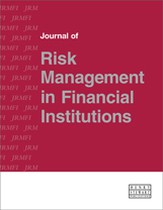Risk management, the board and the C-suite: The adaptive art of communication in times of change
Abstract
Financial institutions have always been tasked with mitigating risks due to their role in financial markets. Risk management is a fundamental component of financial intermediation, which since the late 1970s has become more structured, demanding more sophisticated tools and techniques and requiring Chief Risk Officers (CRO) to possess advanced technical skills, particularly in the hard sciences. Nevertheless, technical skills are not the sole expertise required nowadays; the participation of risk managers in strategic meetings calls for negotiation skills to interact with those responsible for drafting the business plan, typically the Chief Financial Officer (CFO), and communication skills to connect with board members who set the strategic direction. While negotiation can be mediated through the General Manager (GM) or the Chief Executive Officer (CEO), communication with the board is direct and immediate. Traditionally, effective communication is not generally regarded as a typical quality of financial risk managers, since this is a substantially different skill from the technical expertise needed. Regulators require that banks implement company-wide risk management frameworks with the use of analytical models for the measurement and control of quantifiable risks. In addition, corporate governance guidelines advocate for the ‘business partner’ role in risk management. The question is: how do risk officers balance their dual role as a ‘compliance champion’ and a ‘business partner’? Effective communication may provide a solution. This paper outlines the goals and tools for effective communication for risk management to enable sound decision making and thereby counteract the group thinking that may lead to poor decisions, often resulting in an imbalance between risk taking and control that can undermine the operational resilience of banks.
The full article is available to subscribers to the journal.
Author's Biography
Rosa Cocozza holds a Master’s in banking and finance and a PhD in business administration. Her current role as Full Professor at the University of Naples Federico II extends beyond education into effective governance as Chairman of the University Pension Fund and as an experienced statutory auditor of a number of banks, fulfilling the latter role, on some occasions, as an appointee of the Bank of Italy. She is also a member of the Scientific Committee of the Association of Italian Financial Industry Risk Managers (AIFIRM).
Citation
Cocozza, Rosa (2024, December 1). Risk management, the board and the C-suite: The adaptive art of communication in times of change. In the Journal of Risk Management in Financial Institutions, Volume 18, Issue 1. https://doi.org/10.69554/NYAP5618.Publications LLP
